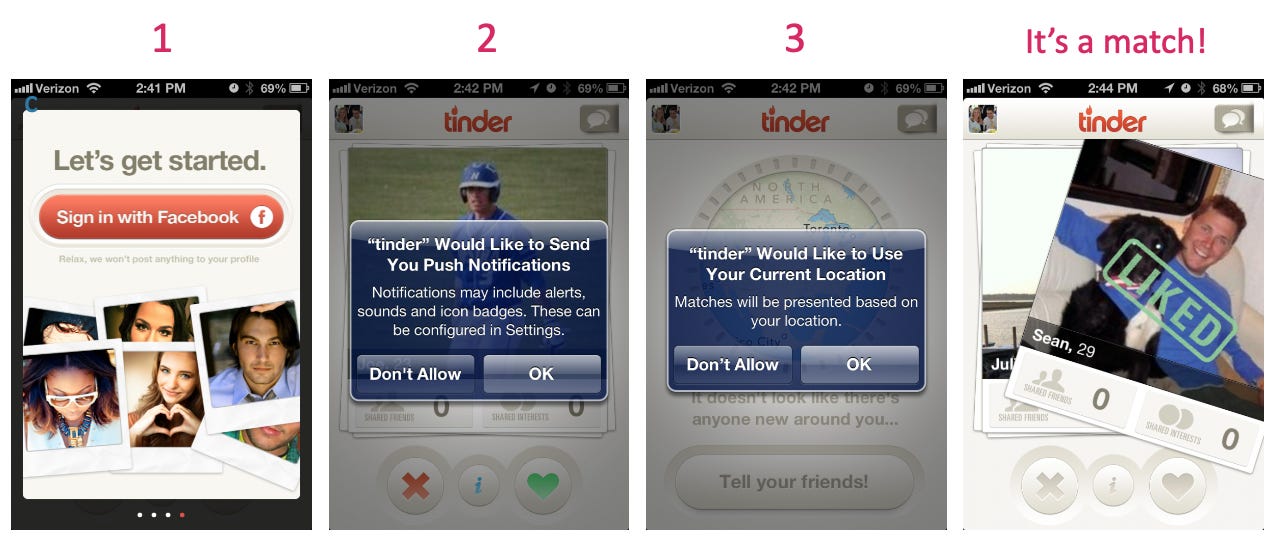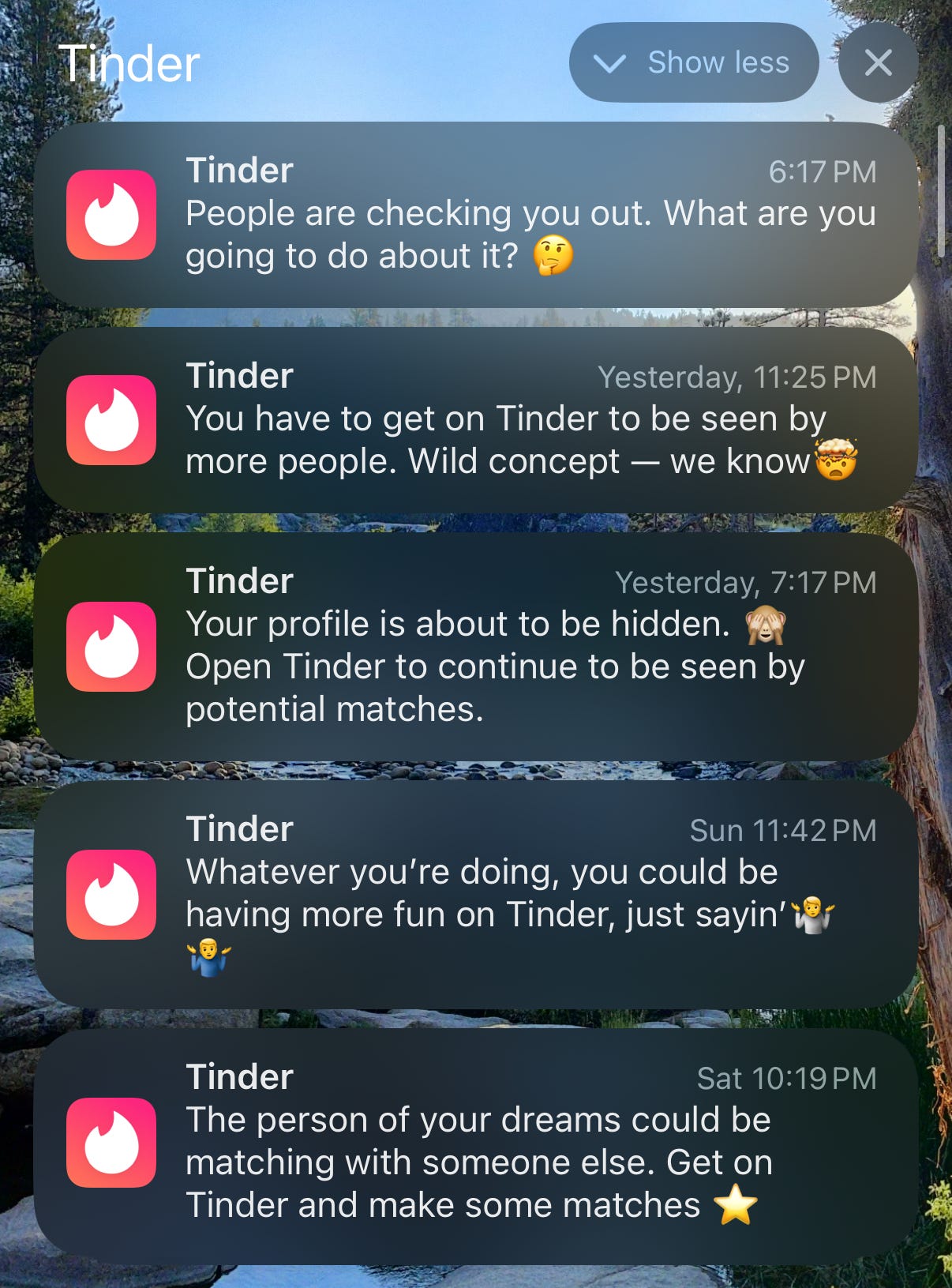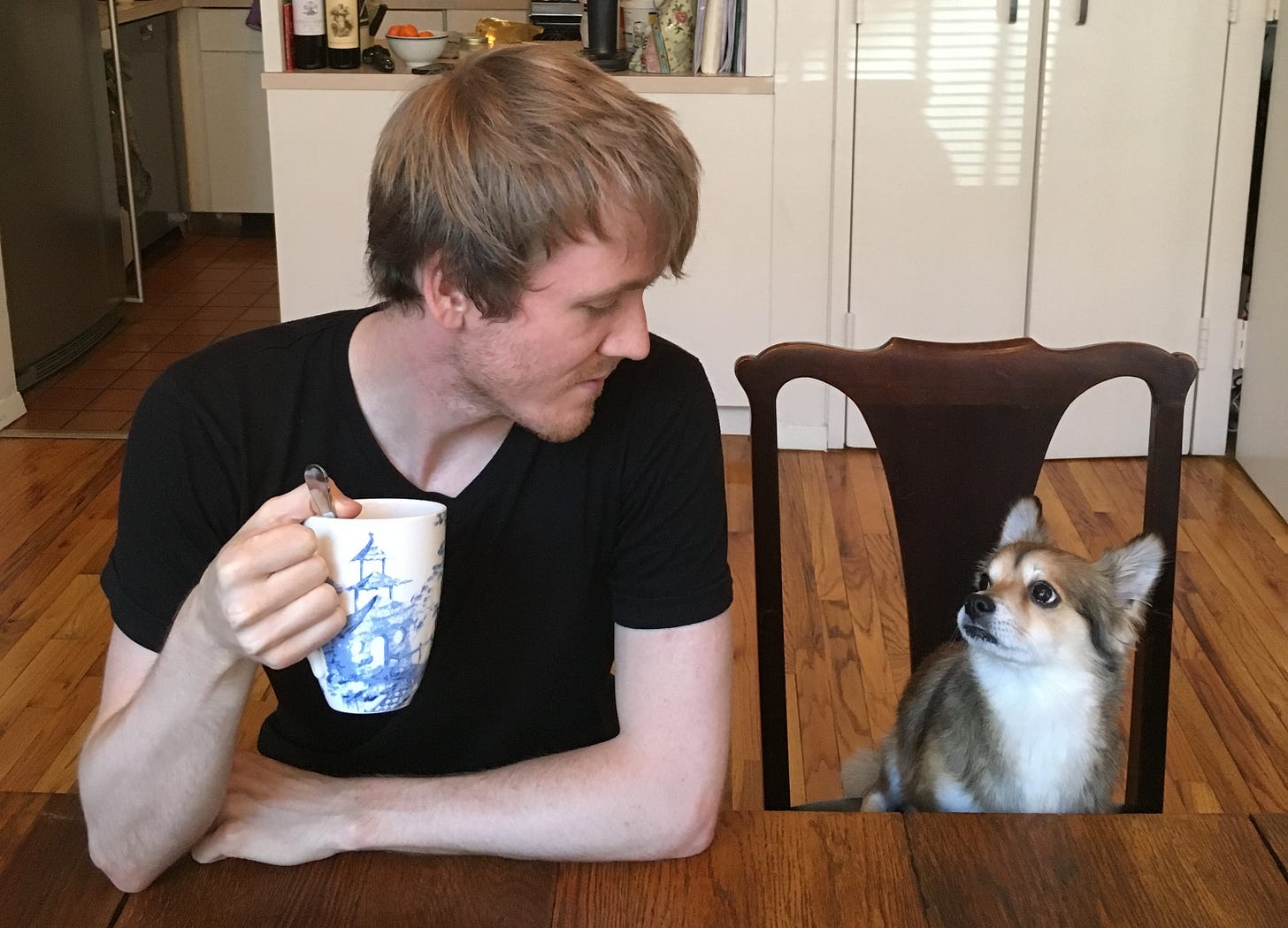A reporter recently asked me some questions about the present/future of dating. In my previous post, I shared my answers about where users are struggling most with online dating, and how AI is influencing the process. Today I’m digging into how dating apps can better evolve with us.
Onward to the questions!
Are there any features or moves you think the apps should make to improve the experience for users?
To answer this, I need to first go on a soapbox about the critical importance of attention, and learning, in the current dating ecosystem.
Right now in 2025, any of our fellow 6+ billion internet connected humans can learn about any topic from virtually any expert in the world at 2x speed using social apps like TikTok and Instagram. We can listen to podcasts at 3x and watch Youtube videos at 4x!
Using widely available consumer grade tech alone, we can do all of this hands-free with voice commands. We can even ask any of our free AI liaisons design a learning curriculum for us across all these platforms.
We’re living at the cutting edge. It’s a marvel to be alive right now. Humans today are beings of unparalleled agency, skill, and thirst for knowledge. Our technologies enable us to produce, share, and consume knowledge at the fastest speeds in history. Every minute of our attention is valuable.
We have grown accustomed to learning constantly, yet…dating apps are not optimized to help us learn. In fact, the opposite is true.
Within mere minutes of swiping through profiles, their algorithms can already detect who we’re generally attracted to. Yet dating platforms are not financially incentivized to reveal our most compatible people, but instead to systematically hide those people from us until we become paying users.
Over 80% of all dating platform revenues come from paid memberships. The more expediently a dating app finds us a match, the faster they lose us as a [paying] user. Dating apps had a 3.3% retention rate in 20241, which means they expect ~97% of us to exit the platform every year.
It is directly against a dating app’s interest to offer us filters and algorithms that would empower us to rapidly surface the most compatible people. Their current interest is to keep us in their ecosystem as long as possible as a paying monthly user, leaving us swiping mindlessly on mostly mediocre profiles for days and weeks on end, rarely matching, and being stuck in endless back and forth messaging loops about pineapple on pizza with a bunch of randos.

I’ve been attending dating industry conferences since 2014, and at every single conference dating industry executives will lament the paradoxical trap of this industry: the more successful you are at matching people, the faster they leave. User success is an existential threat.
In fact, the most popular dating apps in the world don’t even track, let alone optimize for, users meeting up in real life. One of the top grossing dating platforms in the world actually cited “meaningful relationships” as a risk factor in their quarterly business filing:

All we wanted were apps that cared enough about finding us the right person. All we wanted was for these platforms to optimize for actual meetups or relationship outcomes instead of inflatable investor-friendly bullshit metrics like “swipes”, “likes”, and “chats”. Any platform that optimizes for these superficial metrics implicitly optimizes for ghosting. These swipe-happy platforms overwhelm us with milquetoast chats with milquetoast matches. It makes perfect sense for users to unmatch (or even delete the app) rather get sucked into their umpteenth “how was your weekend?” chat from a profile with less than 2 sentences of self-description.2
So, what can dating apps do about it?
Are there any features or moves you think the apps should make to improve the experience for users?
I believe in two rules of thumb for successful dating apps:
Reduce Friction
Increase ROI3 on Attentional Spend
How dating apps reduce friction
The reason Tinder caught on like wildfire in 2013 is that it reduced the friction of meeting a new person by an order of magnitude. Prior to Tinder, virtually all dating apps required users to spent 20+ minutes answering dozens or hundreds of questions before ever seeing another user on the platform.
Tinder reduced that process to precisely four taps.
Suddenly, it took less than ten seconds to go from opening the app for the first time to seeing someone attractive and swiping to declare your interest. This paved the way for rapid adoption. I remember inviting 50 friends to download Tinder on the first day I encountered it back in January 2013.4 It was just so easy.
To further reduce friction, Tinder later 1) made photos take up the most of the screen (easier to gauge attraction at first glance), 2) enabled us to tap our way through photos rather than sliding, swiping, or entering a separate window, which saved us all time and needless hand strain, and 3) overlaid users’ photos with their profile text, demographics, interests, lifestyle traits, and musical preferences so we could rapidly learn more about them as we tap through their photos.
Little by little, Tinder enabled us to cultivate a vibe and capture a bit more of ourselves. Tinder even capitalized on this by letting us sort our match suggestions by vibes, by goals, by shared interests, by sexual and relationship preference, even by time-sensitive options like “free tonight.” Unfortunately, Tinder still keeps profile text capped at 500 characters, which amounts to about three sentences, and it has no match questions or compatibility assessments, so it’s extremely difficult to actually know who might be compatible.
Tinder proved that we humans like looking at other humans, learning about them, and trying to connect with them, enough that we’ll do it on dating apps every day, for on average ~50 minutes per day.5 Humans are reliably horny, and hopeful.
However, our hope has been waning steadily for the last several years as we grow restless from such meager profile depth and repetitive motions that yield so little. Swipe fatigue has set in. Dating apps are losing users, losing revenues, and laying off staff. I attribute this to the second big rule of thumb in dating…
How dating apps (fail to) increase ROI on attentional spend
Dating apps…let us swipe. Then swipe more. Then what? Oh, swipe more. Tinder is the most popular dating app in the world, yet its notifications reveal nothing more than a psychotic thirst for engagement.
Most dating apps today offer no learning, no insights; only psychologically manipulative, precision-targeted push notifications to coax us into their digital dopamine buffets, like a Vegas casino offering free alcohol to lure us back to mindless lever-pulling.
Dating apps will decry that users simply won’t engage with the more meaningful features that require more labor (friction) in order to convey a fuller picture of who they are and maximize their potential of finding compatible partners.
I would argue that this is both a failure of imagination and a failure of capitalism. It’s a sad and shitty world when your executives/investors insist that you cannot engage in any product changes that would compromise engagement, even if those changes vastly improve users’ satisfaction, success, and safety.
The 80/20 dilemma
I think it’s worth confronting the 80/20 rule as it pertains to business. Imagine a dating app that can rapidly and successfully match users to compatible long-term partners if those users utilize all of the matchmaking features within the app, but when the app reviews their engagement statistics, only 20% of users are even using those matchmaking features, while 80% of users are not putting in the required effort, and therefore not getting matches or seeing success. Problem is, the 20% of users who see success leave your platform, while 80% stick around and keep paying.
How do you make the case as a product manager, or executive, to maintain features that make 20% of your users (happily) exit the platform, rather than maintaining the features used by the majority of your users that ultimately drive virtually all your subscription revenue? This is why dating apps inexorably enshittify.
Platforms maintain their gimmicky addictive features and jettison their meaningful matchmaking features. OkCupid is the most textbook case of enshittification, as it has retired its most effective and beloved features every year since its 2011 acquisition by Match Group, leaving us lamenting the good old days when we could reliably find love and connection whenever we returned to the platform.
Now, the ROI on our attentional spend is in the toilet. Five minutes on OkCupid used to let us sort our matches by robust match percentages, read through a comprehensive profile, send a thoughtful message, and expect a thoughtful reply. But over the last decade, OkCupid nerfed its match percentages by stripping the match questions of all their predictive power and uniqueness, removed users’ ability to include multimedia in their profiles, removed vouching by friends, removed its events, forums, and social features, and has now even hidden users’ profile text behind an “expand” button so users need to perform an extra step (friction!!) every single time they want to read a profile.
Where do you see the future of dating apps going in 5, 10 years?
I think a fully optimized dating app would spend the first five minutes with a user guiding them through a learning journey about who and what they’re attracted to. This can start with a panel of faces/bodies/aesthetics where they tap the ones that captivate them, then move onto types of values / lifestyles / habits / communities / movements that they most align with.
Next, the app can use AI to guide a user through profile creation. It asks them questions (ideally as a quick phone call where the user can speak candidly in their own words), then proffers a profile writeup that captures their unique nuances, which they can customize as desired, with options for receiving input/feedback from friends. This whole process can be reduced to 10 minutes, and result in significantly more nuanced profiles and better match outcomes.
To incentivize more learning and discovery on platforms, users should be given the ability to highlight parts of any profile that they enjoy, and their highlights get factored into future match recommendations, thereby rewarding them for the intentionality they’re putting into the selection process.
Ultimately, the business models of dating apps may need to evolve beyond memberships. We don’t want to be strung along for months. We want to spend our dating attention actually meeting real people in the real world, not just stuck in the sourcing/vetting/messaging phase online. Some new dating platforms (and matchmakers) are letting users opt to pay a flat fee to be set up on dates. Some are partnering with local venues to incentivize users to meet up and date there. Some have even experimented with letting users put out a cash bounty for even showing up in the first place.
Have you come across any interesting approaches to monetization or matchmaking in the dating ecosystem? Please share.
For all our sakes, this industry needs to evolve.
Need help with dating, personal development, or navigating relationships? Let’s talk! I’ve been a coach and dating app consultant for nearly 15 years! Schedule a call with me and we’ll talk through your life, goals, struggles, and strategy. First call is free, and I’ll do what I can to point you in the right direction!
~Steve
https://www.businessofapps.com/data/dating-app-benchmarks/
Hinge, the current darling of the dating industry, limits our capacity for self-description to just a few hundred characters divided across various profile prompts. The only “about me” section we can fill out is visible exclusively to the app’s internal algorithms, not to other users.
Return on Investment
Realtalk: are there any dating apps you’ve recommended to even one friend?
https://www.forbes.com/health/dating/dating-app-fatigue/





I suppose it's worth qualifying one major trend over the last 15 years that has strongly influenced the enshittification of these platforms. In 2010, close to 90% of people accessed dating platforms via desktop, but in 2025, over 80% of people access these same platforms via mobile. From a product standpoint, when 80% of your usage comes from mobile, you very quickly begin designing a mobile-first experience, and culling features that only functionally operate on desktop.
I don't want to paint the product designers and executives at dating platforms as necessarily bad actors; most of them are just facing down very stark and unyielding usage trends and doing their best to respond to them.
It's hard to build a dating app. Building one can take months or even years of research, design, development, and fundraising.
But it's orders of magnitude harder to *grow* a dating app. No matter how much money and effort you spend acquiring your first cohort of users, statistically they'll be gone within 1 calendar year, and then you have to rebuild your user base all over again.
How much money do you plan to raise to build your dating app? $100k? A million? Two million? How much of that do you plan to allocate to marketing and advertising? And that's supposed to last you...a year? Two years?
Match group currently spends $48 *million* per *month* across marketing and advertising. (https://s203.q4cdn.com/993464185/files/doc_financials/2024/ar/MTCH-ARS-2025-03-27.pdf). Bumble spends about $15 million per month.